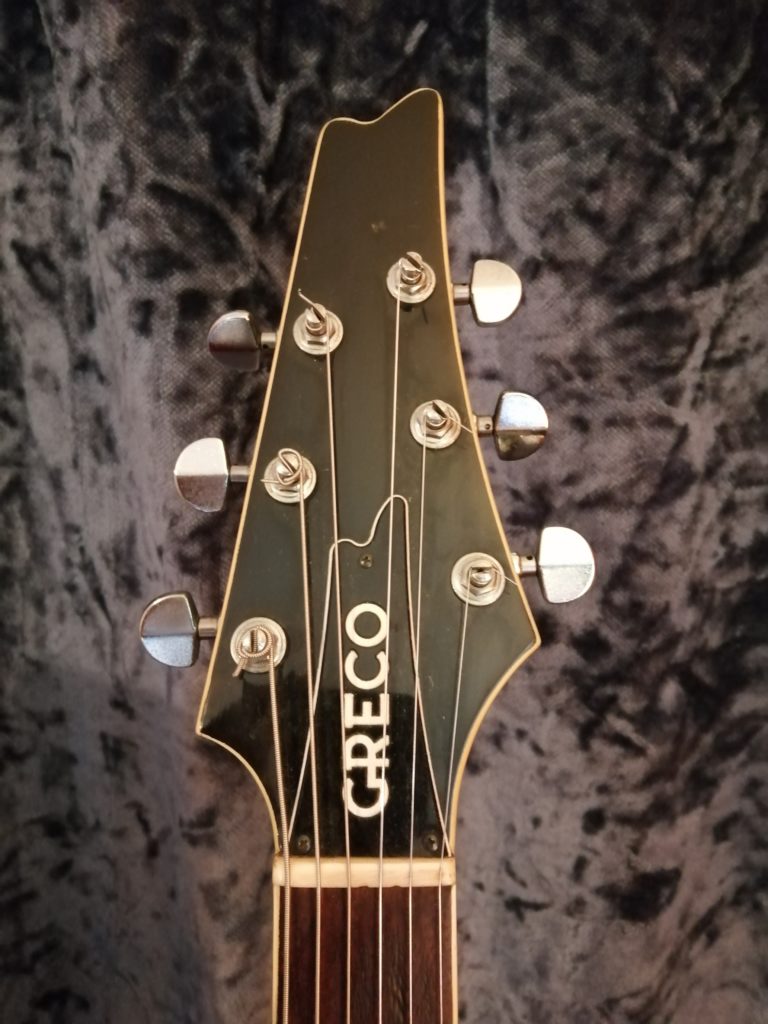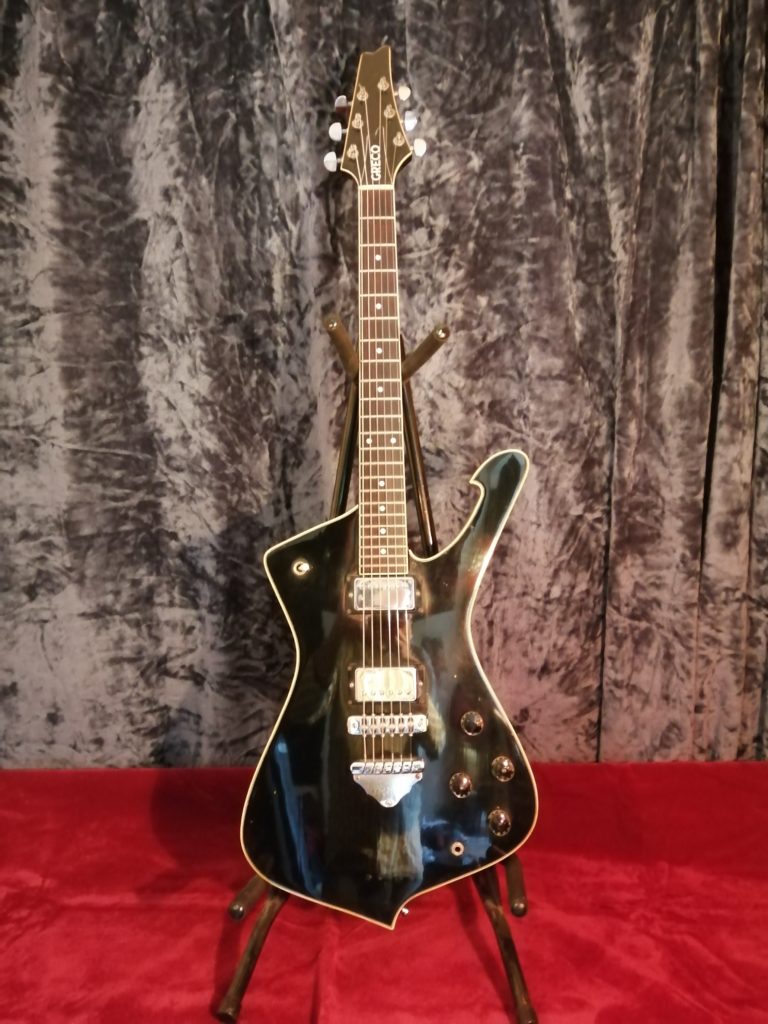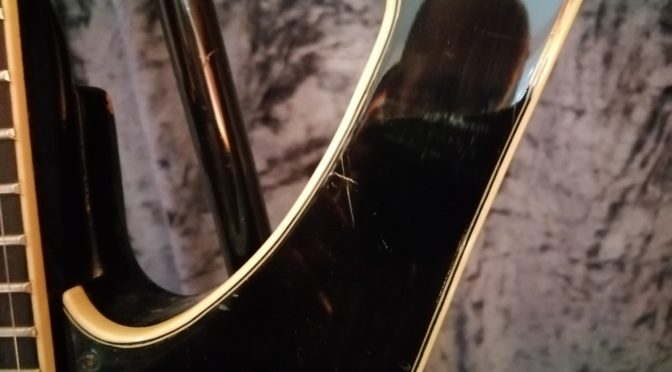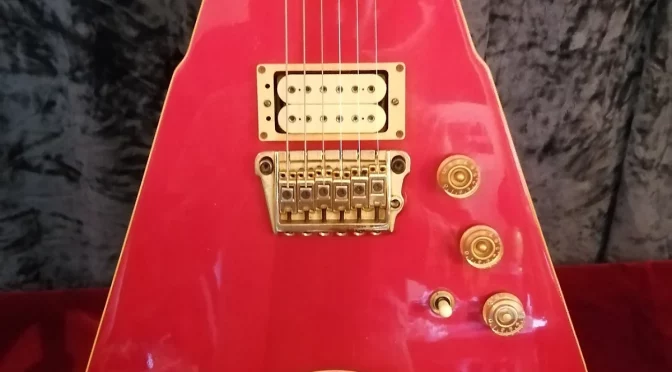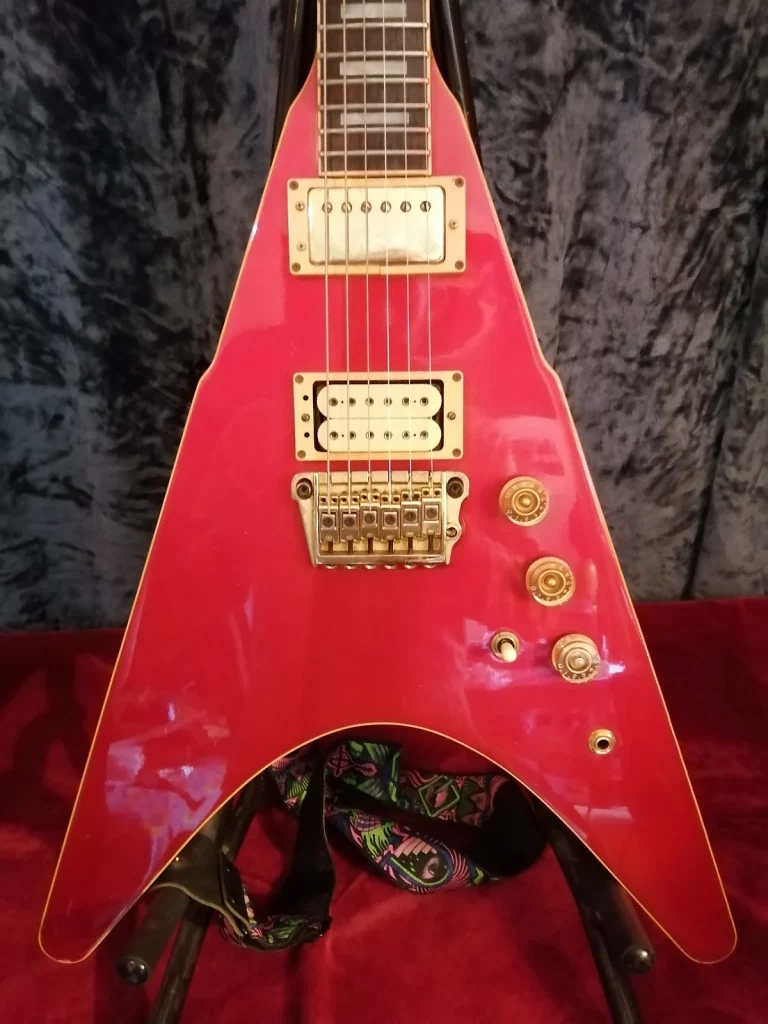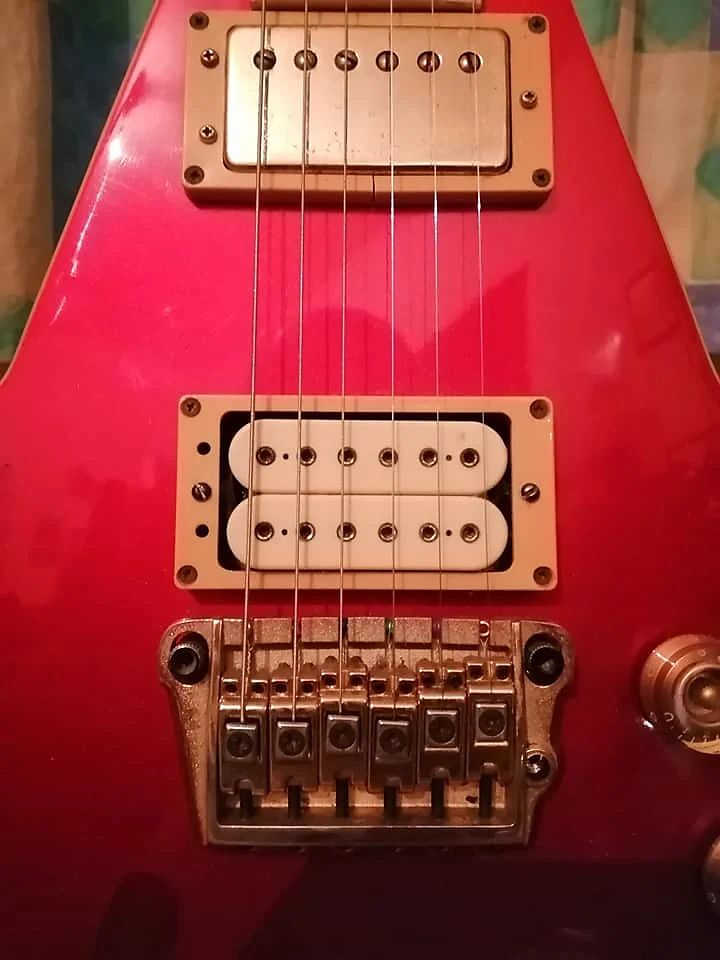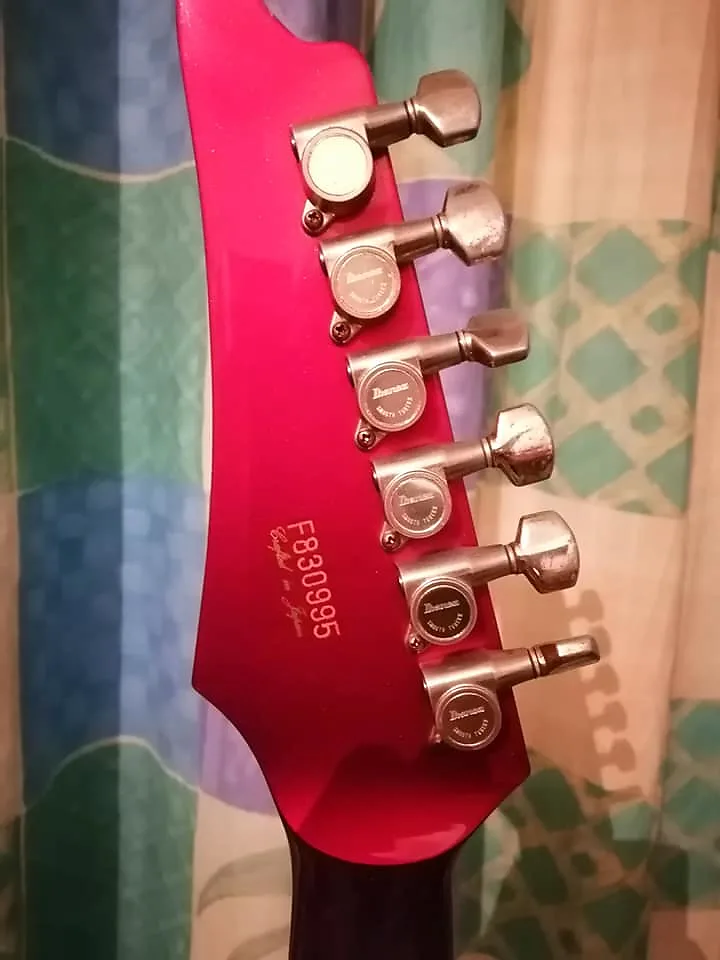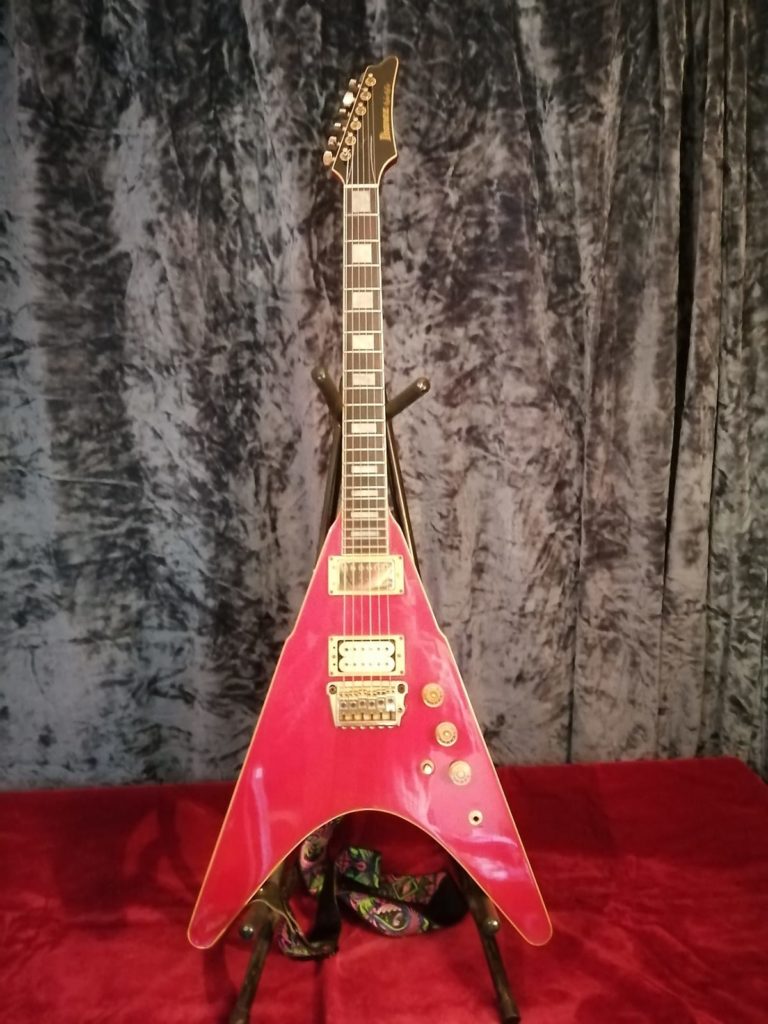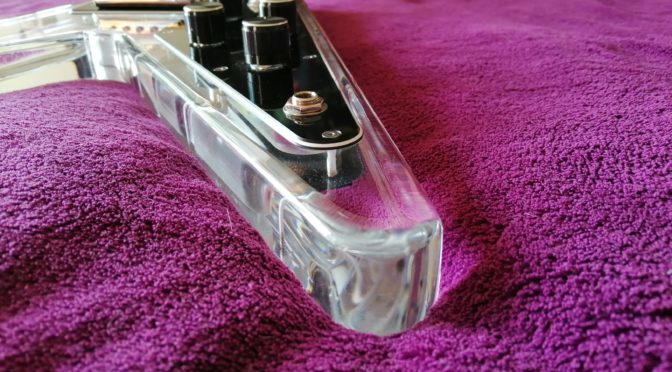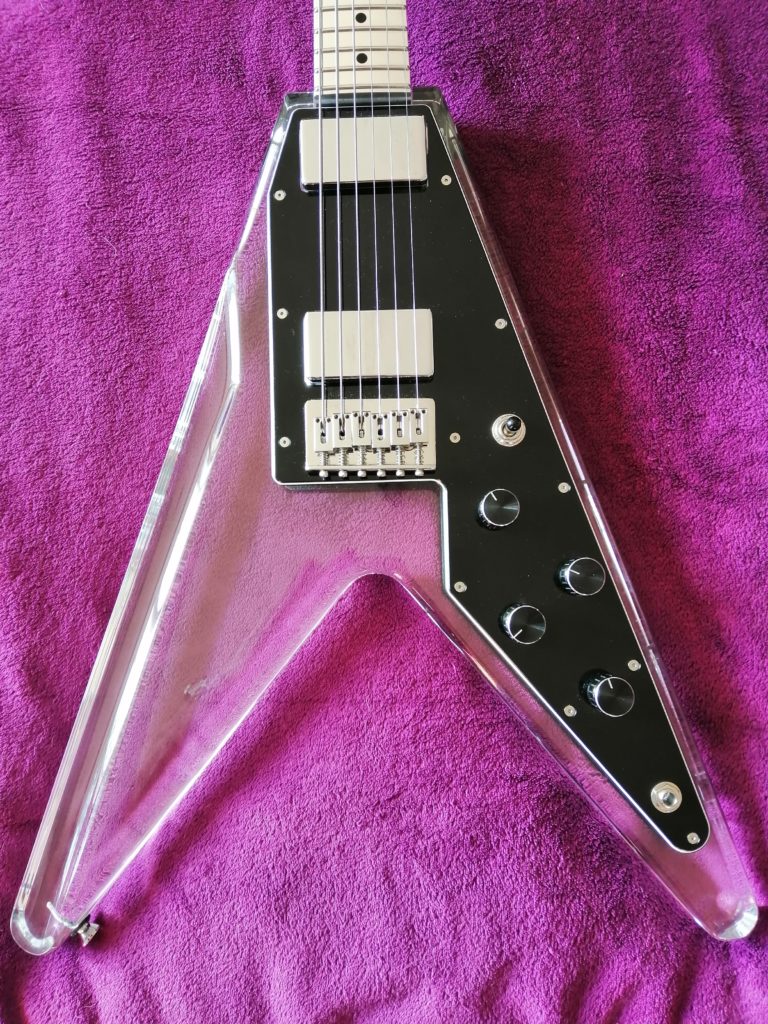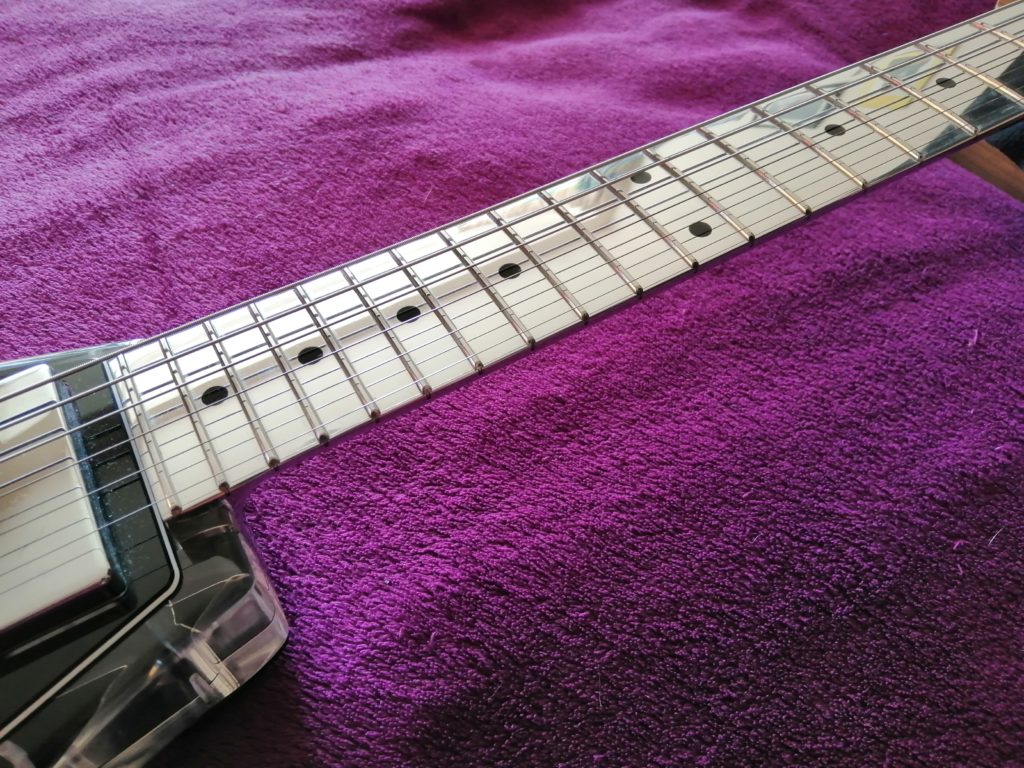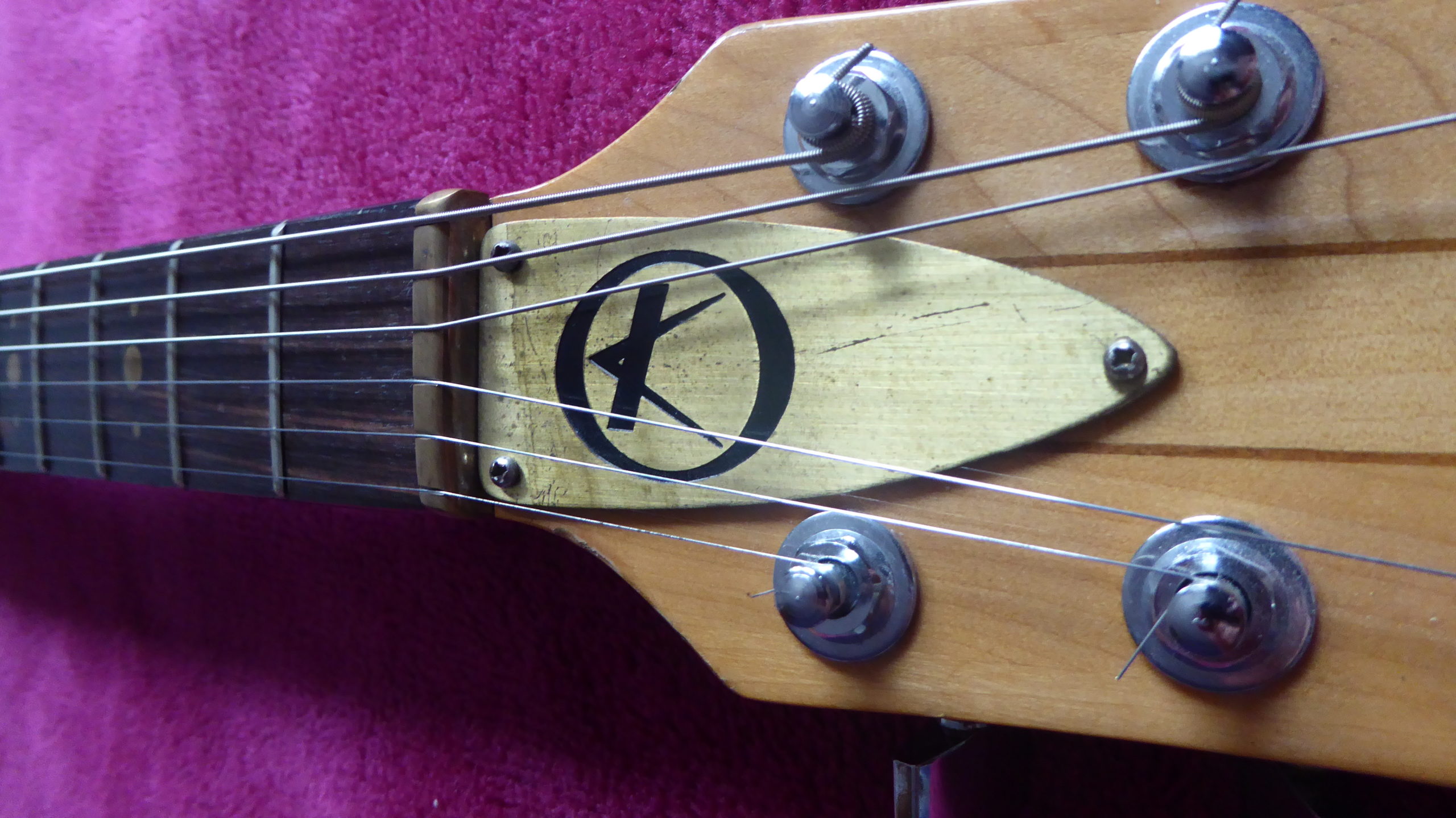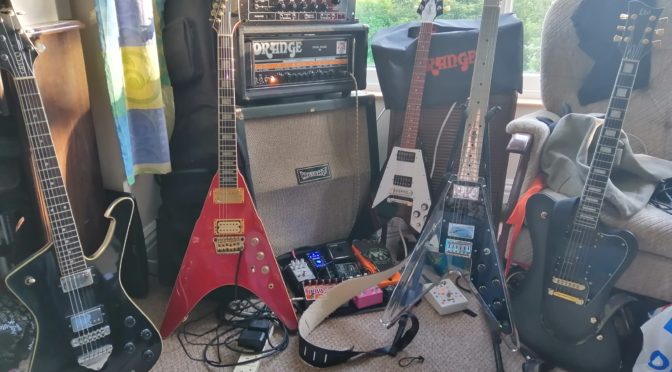Also marketed as Univox Effector or Kay Synth-guitar

Facebook is a strange and dangerous place.
It has, with the able assistance of Twitter, both created a new kind of human interaction and destroyed the old social balances that underpinned our societies. This ubiquitous and uncontrollable communication medium has liberated nations, destroyed whole regions and unbalanced our political systems and social fabric to the point that we find ourselves on the edge of near constant chaos as a direct result. The power is as immense as it is unpredictable. It is also quite good at learning the stuff that you like and showing you stuff that’s for sale near you, using dark and arcane magic. So after a brief (and lovely) holiday in Cornwall one sunny September weekend this bizarre little thing came to be in my possession.
Dating these Kays of this era can be tricky, as the Kay company in the ’70s & 80’s weren’t massive on things like ‘records’ or ‘serial numbers’, but this one does have the sticker still attached, so we can tell it’s year of manufacture (1981).
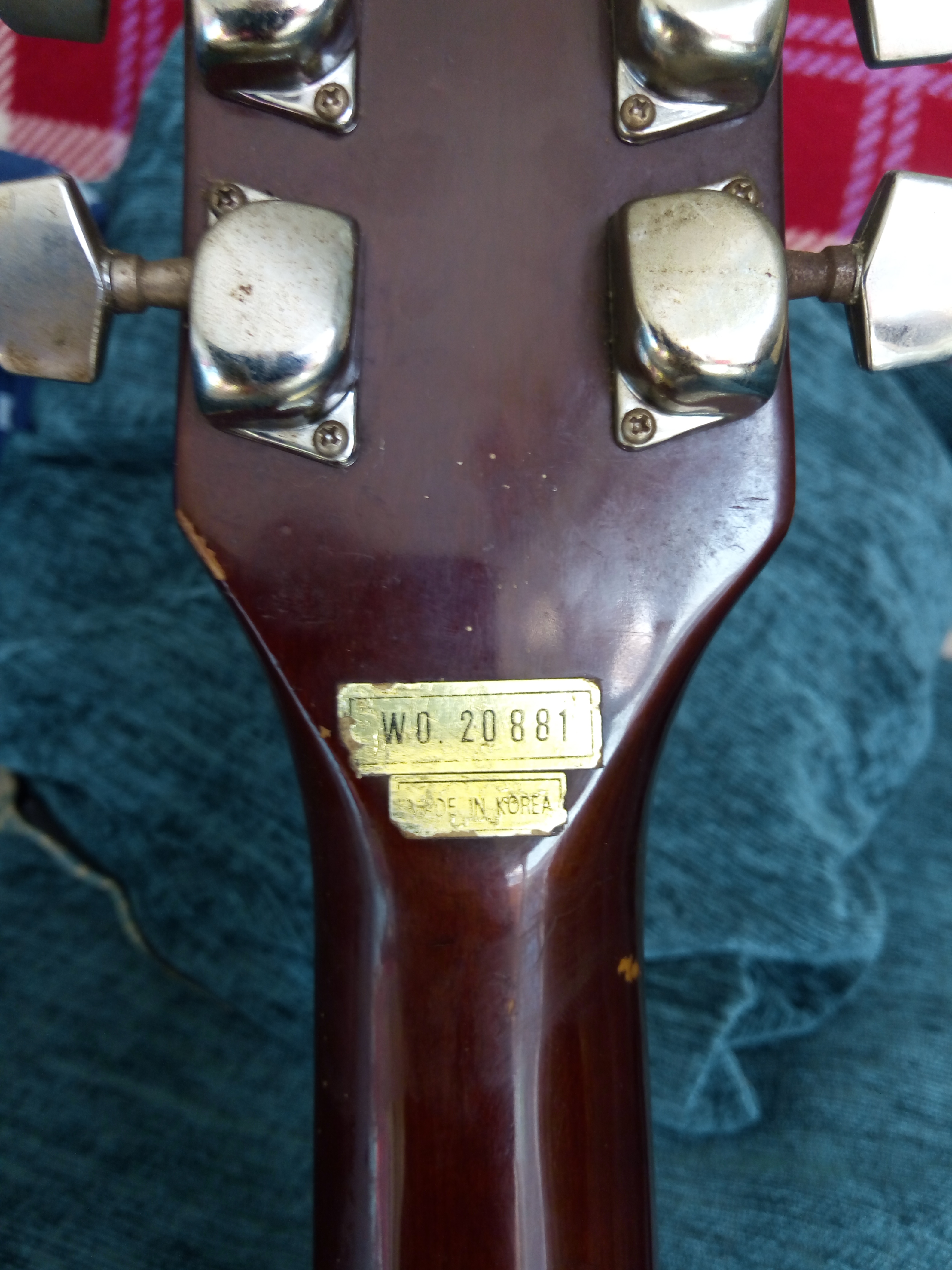
The company itself changed hands in 1980, so this would, I guess, have been an attempt at trying to push into a crowded market with something a bit different, which it certainly is, but as the company only lasted another 6 years before being dissolved in 1987, it clearly didn’t do that well. If you have one that’s missing the S/N sticker though, I did manage to find out from somewhere on the interweb that the ‘whirlwind’ effect used to be named something else, some organ type or other, but they got sued for using the name on the effect and so in ’81 changed it to ‘whirlwind’. So, if it’s not called that, you have a 1980 or before. I think. Feel free to correct me in the comments if you know better!!
Build Quality
I bought the guitar without strings and in pretty bad nick. The body is very battered and the build quality is, certainly by the standards of other factories of that era, less than stellar… I’m not sure of the factory of origin, Kay records are, as we’ve already said, less than comprehensive. If you have any knowledge of it though please let me know (I’d genuinely love to know!).
However (and it’s a big one), this guitar is just too bonkers not to enjoy.
It feels solid enough, though much lighter than the Les Paul that it’s obviously based on. The neck has remained true even after 37 odd years and the hardware, though tarnished, is still decent. The electronics are all still working, which given the complexity of it is impressive, a few scratchy pots not-with-standing. The neck humbucker was installed too close to the neck, a problem with inaccurate hole routing as far as I can guess, so the pickup sat too high, which meant the action was set at about 1/2″ off the fretboard and the intonation was so far off it was in the next room. I solved this by trimming the pickup ring along the top edge to enable it to sit nicer, which got the action down to at least something playable, and the intonation is now better, but still not bang on. I need to get the measuring tools out to see properly, but I also think they messed up the neck position, so, yeah… not great.
Features
Okay, so this is where things get a little bizarre…
It has two humbuckers… or so you think, they’re actually single coils in big boxes, a reasonably quality fixed bridge, plastic nut, block inlays (plastic) and a bolt on neck. At this point we can’t avoid the elephant in the room any longer… that scratch plate… what in the world is going on there?
Let me enlighten you…
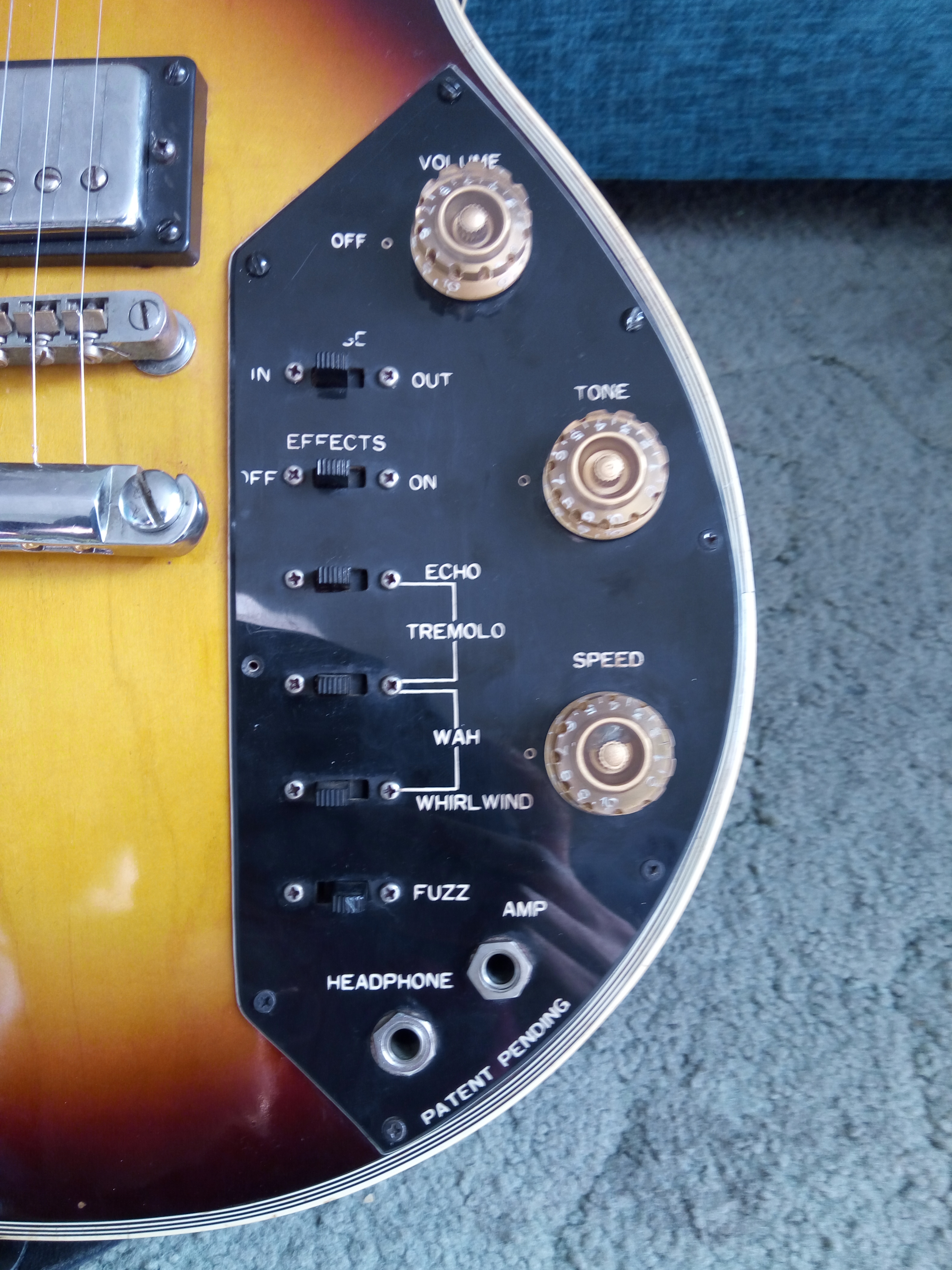
Single volume and single tone, so far so budget… but for all the switches present on this thing you will not find a pickup selector. No sir. Who wants to switch between pickups anyway? No, what all guitars need instead is a Phase switch (the font has mostly rubbed off on this one but you can make out which switch it is). So, you can have in phase or out of phase. The other pot controls the speed of the selected effect(s). The volume pot is also equiped with an ‘off’ switch at the zero position. I think this is for the 9v battery that powers the effects, it’s the only reason I can think of that would warrant the extra expense of the switched pot, but who knows.
Moving down from the phase switch we have the effects on/off. If you have this turned on without any effects selected it cuts out completely, true bypass this is not.
The Effects
The important thing to remember here is that, with the exception of the fuzz effect, none of them sound like you think they will by the label. Also, as they fitted four effects onto 3 switches, each switch is not dedicated to an individual effect, rather the combination of positions governs what you get. I have literally no idea how this got through the meeting stage and into production but there we are. Drinking at work in the 80’s was popular so… yeah.
With the first switch in the ‘on’ position you get the echo effect, which isn’t an echo, its more of a tremolo but whatever, it does something weird to the sound. Add in the second switch and you have what Kay called the Tremolo effect, which is essentially like doubling up the echo… ish. If you then turn the first switch off again the guitar cuts out. Again.
I just want to pause for a moment here. We now have 3 different ways, using multiple controls, to silence the guitar. Volume to zero/off, effects enabled without any effects in the on position, or effects enabled with only the central effect in the ‘on’ position. That’s a lot of ways to cut yourself out. I’m not sure, but I don’t think a gigging musician designed this…
Moving on to the next effect, we have with both 2nd and 3rd switches in the ‘on’ position, the ‘wah’ effect. I’ll just post a video, You be the judge. It defies rational explanation. With only the 3rd switch selected you have the famous ‘Whirlwind’ effect, now, I’m no organ aficionado, but I’m thinking that though the name may (pre lawsuit) have been similar, the sound is a little wide of the mark. Again, it’s hard to describe so I’ll point you to the video I haven’t made yet, I’ll update the post when I have (though the thing is currently in storage so it might not be for a while…). Lastly ‘effects’ wise we have the ‘Fuzz’ switch. This is actually pretty good, and though quite muddy definitely boosts the guitar in the mix and adds a nice warmish fuzz tone. It won’t win you any awards, but it’s pretty fun!
Lastly in this tale of good intentions is the dual output. We have a standard 1/4″ jack for going off to your amp as normal, but we have another that is labeled ‘Headphone’, with the promising tag line ‘Patent Pending’… now, I’m not sure if they ever got that patent, or whether the rules for said application involved needing something to actually work, but this 100% does not, and as far as I can tell, no one else has got one that works either. I’ve yet to have a look at the guitar on the inside, but I’m thinking the necessary pre-amp for headphone output won’t be there, so maybe Kay sold pre-amp equipped headphones? Who knows.
So there you have it Ladies and Germs… the Kay/Univox Effector

